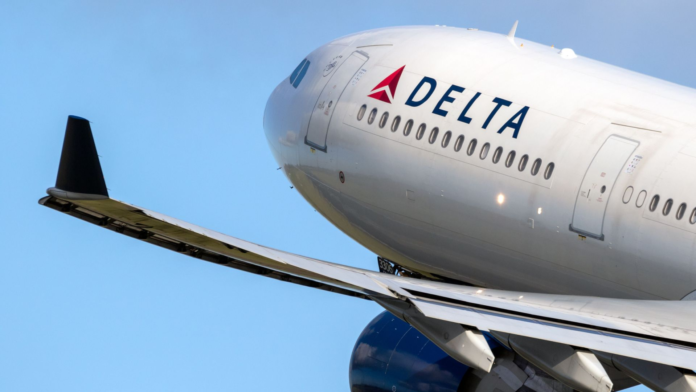Today, we will look at Hartsfield-Jackson Atlanta International Airport (ATL)-based Delta Air Lines and see how their cabin crew and pilots are taught to deal with inflight medical emergencies. According to USA Today, quoting an article in the New England Journal of Medicine, for every 604 flights, one will have a medical emergency.
In the United States, that is nearly 50 medical emergencies per day. Of these, 1% end in death, and 7% require pilots to divert to the nearest airport.
Cabin crew training
After being hired, each Delta flight attendant receives six weeks of training, during which they are taught how to handle an inflight medical emergency. This is then followed up with a refresher course every 18 months.
Photo: Delta Air Lines
As well as being able to identify symptoms, Delta flight attendants are taught how to provide basic first aid, CPR, and how to use an automated external defibrillator (AED). Delta flight attendants are also instructed to ask if any medical professionals onboard can assist.
MEDAIRE’S MEDLINK
With MEDLINK, flight attendants can access a team of doctors who will help them handle a medical emergency. Before MEDLINK, flight attendants had to rely on information from the ground to the pilots and then pass it on.
When speaking about using the MEDLINK App in a Delta Air Lines statement, flight attendant Lori Williams said:
“I feel grateful that we have this tool that helped make a difficult situation less stressful as it allowed us to devote more of our attention to providing immediate aid for the customer.”
Enhanced medical diagnostic equipment
As well as MEDLINK, Delta Air Lines has upgraded its medical equipment on flights to include an enhanced medical-grade stethoscope, automatic blood pressure cuff, temporal thermometer, and a pulse oximeter.
Photo: Delta Air Lines
In a statement from the airline, flight attendant Kenneth Sperling said:
“The new devices on our aircraft make it so much easier to gather the vital information we need to assess the condition of our customers. For example, the pulse oximeter now allows us to provide doctors with real-time blood oxygen readings. At the same time, the automatic blood pressure cuff is not only quicker to set up but is also much more intuitive to use while returning more accurate and consistent readings.”
The FAA requires all aircraft to have medical supplies
The United States Federal Aviation Administration (FAA) requires all commercial airliners to have at least one sealed medical emergency kit that contains the following instruments and medications:
Equipment onboard
16 x 1-inch adhesive bandage compresses
20 x antiseptic swabs
10 x ammonia inhalants
8 x 4-inch bandage compresses,
5 x 40-inch triangular bandage compresses
1 x non-inflatable arm sprint
1 x non-inflatable leg sprint
4 x 4-inch roller bandages
2 x 1-inch standard roll adhesive tape
1 x bandage scissors
1 x sphygmomanometer (blood pressure monitor)
1 x stethoscope
3 x airways oropharyngeal (3 sizes)
4 x syringes to administer required drugs
6 x needles that are required to administer the required drugs
Medications onboard
2 x 20mg single dose lidocaine
1 x injection of 50cc dextrose
2 x ampules of single-dose epinephrine
2 x HC1 single dose ampule of diphenhydramine
10 x nitroglycerin tablets
4 x 25mg antihistamine tablets
4 x 325mg aspirins
1 x kit containing protective gloves and instructions on administering the medications
All flights must have at least one easily accessible defibrillator in the passenger cabin. Some airlines also carry naloxone, an overdose-reversal drug.
What are your thoughts? Let us know what you think in the comment section.
Sources: USA Today




